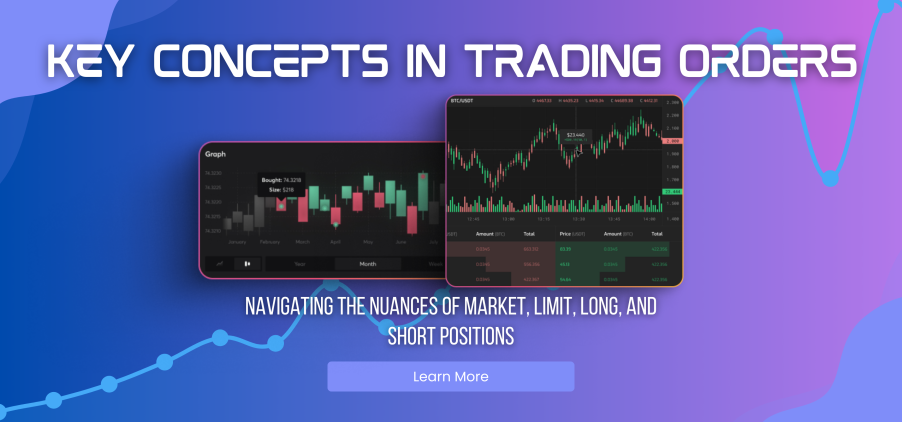In the complex world of trading, whether you're engaging with stocks, forex, cryptocurrencies, or commodities, understanding the types of orders you can place is crucial. Each order type offers different benefits and is suited to particular strategies and market conditions. This article explores the most common types of trading orders—market, limit, long, and short—and explains …
Key Concepts in Trading Orders: Navigating the Nuances of Market, Limit, Long, and Short Positions

In the complex world of trading, whether you’re engaging with stocks, forex, cryptocurrencies, or commodities, understanding the types of orders you can place is crucial. Each order type offers different benefits and is suited to particular strategies and market conditions. This article explores the most common types of trading orders—market, limit, long, and short—and explains how traders can use these tools to enhance their trading efficiency and effectiveness.
Market Orders
A market order is the simplest type of trading order, used to buy or sell a security immediately at the best available current price. It is designed for speed, ensuring that the trade is executed quickly. However, in very volatile market conditions, the price at which a market order will execute can vary significantly from the price seen at the time the order was placed.
Pros: Fast execution is ideal when timing is more critical than price.
Cons: Price slippage is possible, and it might not be ideal for large orders in less liquid markets.
Limit Orders
Limit orders are used to specify the maximum or minimum price at which you are willing to buy or sell a security. This type of order guarantees the price, but not the execution, as the market may never reach your specified price.
Pros: Control over the price of trades, useful in less urgent situations where price is more important than speed.
Cons: There’s no guarantee the order will be filled, especially in fast-moving or thin markets.
Long Positions
A long position is when a trader buys a security with the expectation that the asset will rise in value. Going long is one of the most common trading strategies and is generally seen as a bet on positive future performance.
Pros: Potential to benefit from a rise in the market; intuitive for beginners as it aligns with traditional investment strategies.
Cons: The risk of loss if the market declines; potentially unlimited losses, especially in markets without upper price limits.
Short Positions
In contrast, a short position involves selling a security that is not currently owned with the intention of buying it back later at a lower price. Short selling is speculative and based on the expectation that the asset will decrease in value.
Pros: Ability to profit from declining markets; can be used as a hedge against other positions in your portfolio.
Cons: Potentially unlimited losses if the market rises; requires borrowing assets, which incurs costs.
Stop-Loss Orders
While not the primary focus, stop-loss orders are worth mentioning as they are crucial for risk management. This order type is used to limit potential losses by setting a sell order for a security when it reaches a certain price.
Pros: Helps manage risk by capping potential losses without needing to constantly monitor the market.
Cons: In volatile markets, a stop-loss order may lead to a sale at a very unfavorable price due to slippage.
Implementing Order Strategies
To effectively utilize these different types of orders:
Assess Market Conditions: Choose between market and limit orders based on market volatility and the liquidity of the asset.
Define Risk Tolerance: Use stop-loss orders to manage and mitigate potential losses based on your risk tolerance.
Align Orders with Goals: Match long or short positions with your market outlook and investment goals, adjusting strategies as market conditions change.
Conclusion
Whether you’re a novice trader or a seasoned investor, understanding the nuances of different order types can greatly enhance your ability to navigate the markets efficiently. By strategically using market, limit, long, and short orders, traders can better manage their investments, capitalize on market movements, and protect against losses, leading to a more robust and responsive trading strategy.








